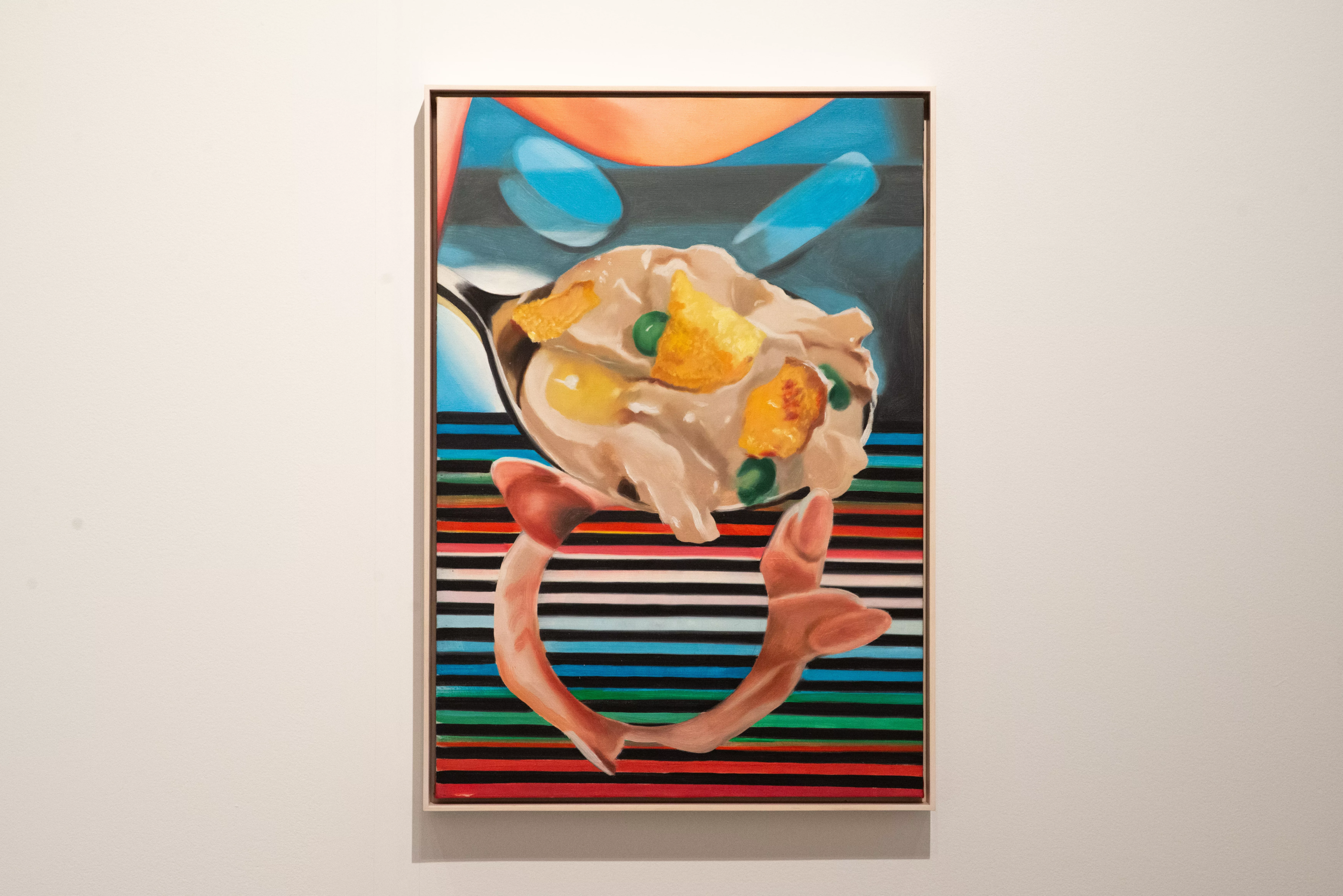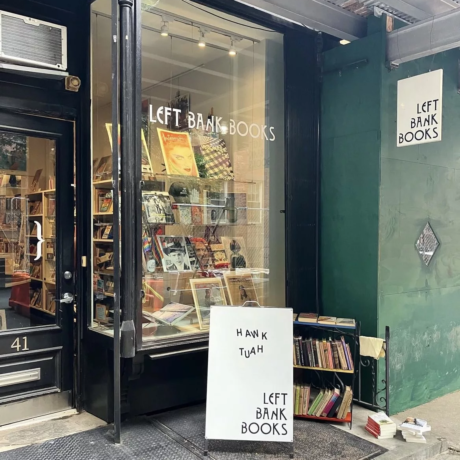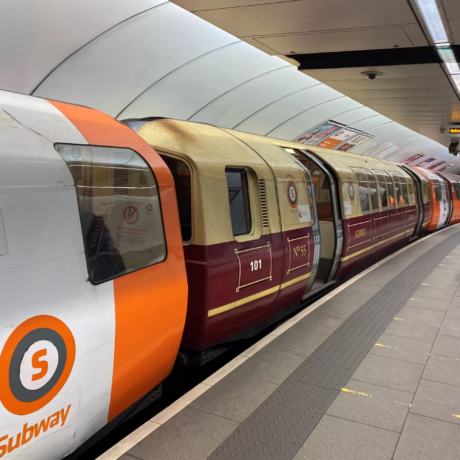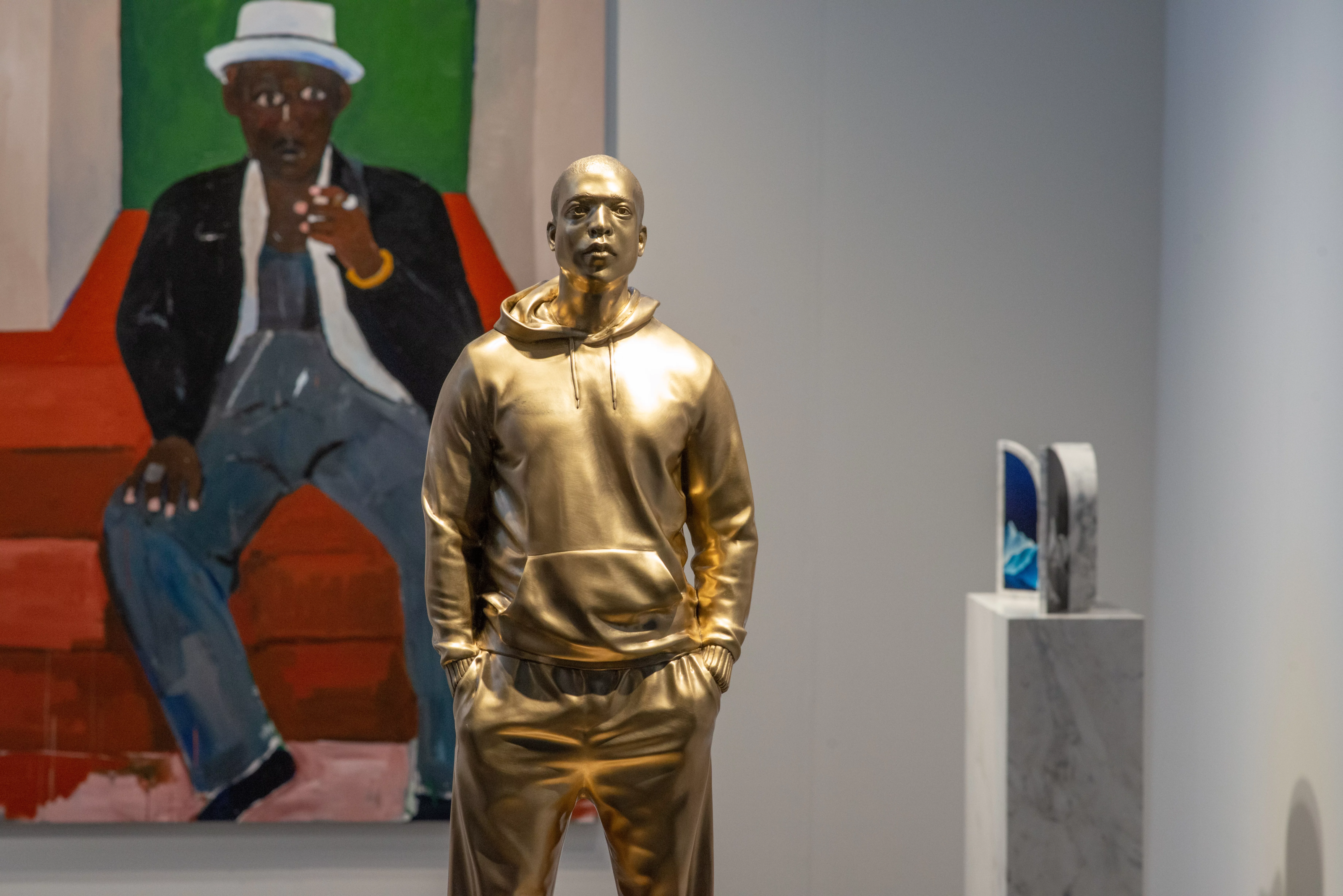
From the eighth floor of The Shed where Frieze New York opened its new edition yesterday, the booths down on the second floor seemed to have a video game-like rhythm: visitors march the aisles like Sims figures, exhibitors hop between the inquiring collectors, and art is hung on the wall as the desired prize. Between a laser-sharp harmony and an evolving unpredictability, the game seemed on its course towards the next round. “We are getting an insider view where you can understand the behind the scenes which is not often revealed at art fairs,” told Elephant Christine Messineo, who oversees Frieze New York for the third year while enjoying the omnipresent bird’s eye view of the layout from the glass window.
The landscape below was a Tetris-specific configuration of galleries—mainly bluechip—in the fair’s lowest floor out of a total of over 60 exhibitors. On its preview day, the excitement seemed escalated, perhaps at the highest since the fair moved from Randall’s Island to the Hudson Yards’s multipurpose venue. Most heavy-lifters opt for group presentations, such as Hauser & Wirth, which blends an energetic medley of two and three-dimensional works. Thomas J Price’s 19-inch bronze and oak sculpture A Place Beyond (2024) is a smaller edition of the artist’s 9-foot sculpture of an assuming young Black woman which had debuted in his solo show at the gallery’s downtown Los Angeles space last year. This modest scale edition is indeed a part of the fundraising efforts for Britain’s two upcoming free cultural institutions V&A East Storehouse and Museum. Nicholas Party takes sculpture to a time travel with his oil on copper and oil on wood triptych of a figure in the artist’s typical gender- and age-free interoperation of portraiture. The mountainous view that backdrops the saintly figure adds depth and further divinity to Party’s reference to religious Byzantine triptychs.
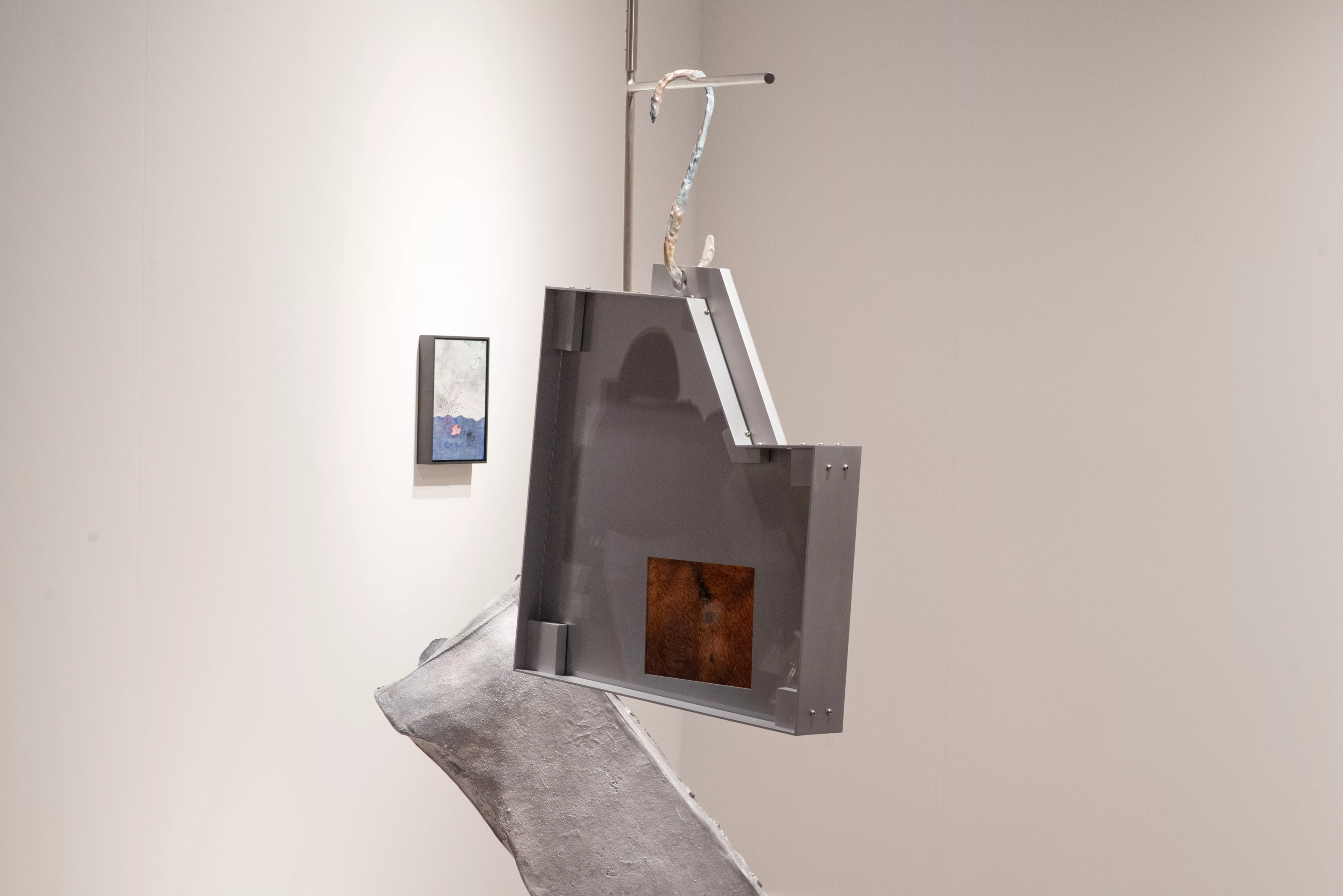
At Mexico City’s Kurimanzutto, forms and stories mingle: Nairy Baghramian’s energetic casted aluminum, stainless steel, and c-print sculpture, S’accrochant (rouille) (2022) is suspended from the ceiling like an architectural cadaver with chunks of industrial debris orchestrated with an image of a cluster of flies. Ana Segovia’s blue-washed painting, Noche Americana—int cantina (2024), shows a group of Mexican cowboys in the midst of a bar braw. Those who haven’t yet made it to the Metropolitan Museum of Art’s roof to look at the Manhattan skyline through the frame of Petrit Halilaj’s massive spider sculpture with a cringey smile has a taste of the Kosovar artist with his ruler size wall sculpture, They are Lucky to be Bourgeois Hens (2023), which includes a minuscule pencil drawing of a mythical figure fixed onto a horizontal wooden block.
At Tanya Bonakdar Gallery, Tomás Saraceno’s suspended powder-coated stainless steel and plexiglass sculpture, Foam SB 103/17p (2024), pulls the visitors to its iridescent charm. Larger versions of the whimsical sculpture currently sits at the artist’s gallery show in Chelsea, similar to Kimsooja whose floor work, Bottari – The Island (2011) with used red Korean bedcovers and used Japanese clothes offers a snippet to the Korean artist’s ongoing solo at the gallery. The main Kimsooja spectacle, however, is currently at Paris’s Bourse de Commerce, where she installed glass mirror floors at the museum’s rotunda to reflect the 19th-century ceiling murals onto the floor. Thaddaeus Ropac’s grouping travels between decades and includes Sturtevant’s salute to Jasper Johns with a 1987-dated painting titled Johns out the Window in which a group of text—including a barely legible “yellow”—strikes out of a colour medley. Soles take the central stage in the Guatemalan gallery Proyectos Ultravioleta’s group display—Edgar Calel created his nocturnal-hued paintings, overall titled Como luciérnagas son cada uno de mis pasos (2024), in collaboration with his family members who walked over the canvas to bear acrylic footprints. The steps taken by different relatives orchestrate a multigenerational family portrait and complicate the linear understanding of time and heritage.
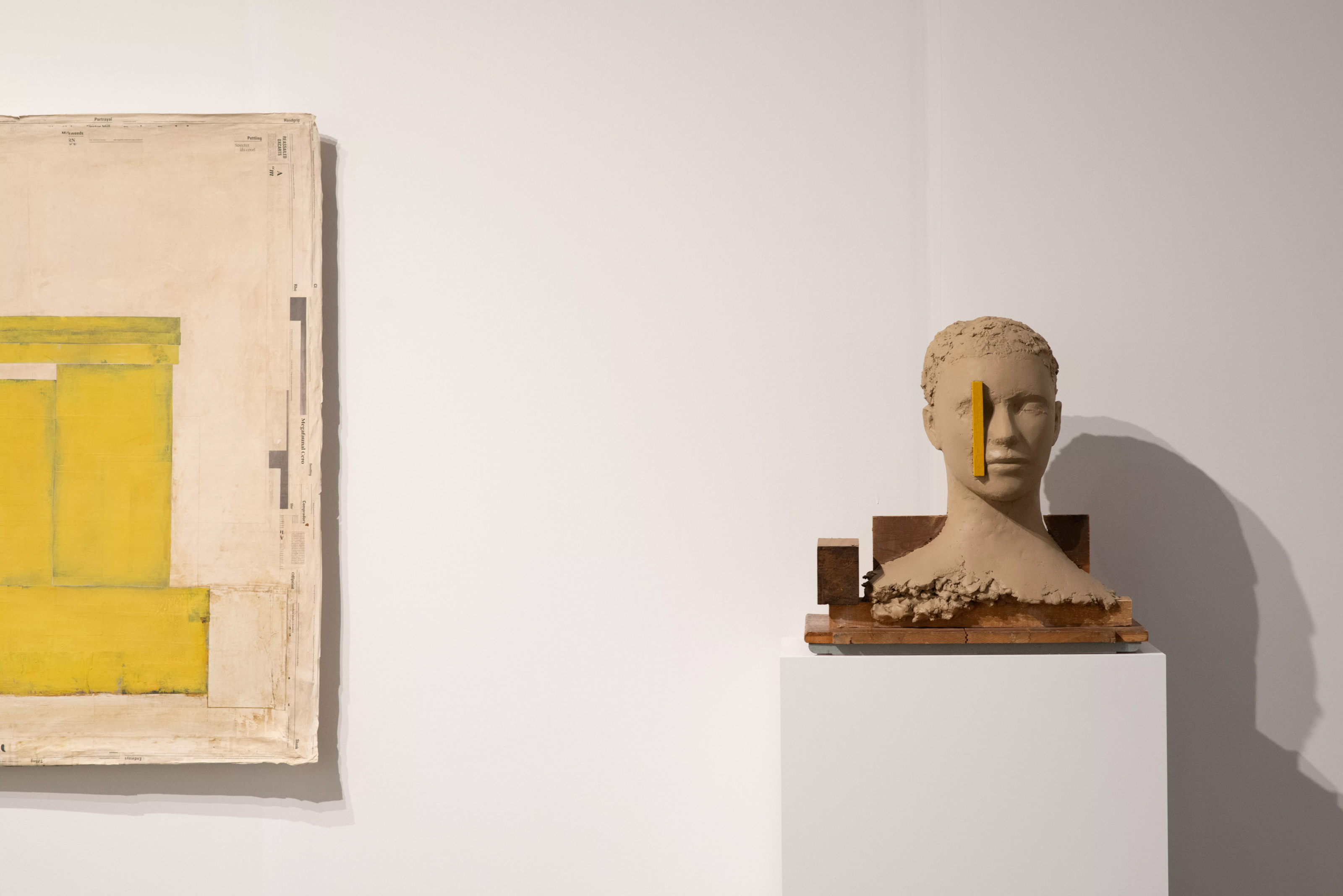
Painting is also the protagonist in Karma’s selection, including a large-scale romantic nature vista by Ann Craven. Titled Portrait of a Dove (Sitting, Watching, After Picabia), 2024, (2024), the Maine-based artist’s diaristic take on her daily musings suggests a non-human language to understand animals’ relationship with nature and existence. The focus of the British artist Holly Hendry’s investigation of mystery at Stephen Friedman Gallery is the human form. Following the artist’s recent larger-than-life window sculptures at the SCAD Museum of Art in Savannah, the smaller assemblages build a humorous connection between corporality and the office cubicle and clutter. Work desk and its junks are composed into energetic sculptures in sturdy materials such as jesmonite, ceramic, steel, oak, bronze, and glass. Another standout solo is by downtown gallery Gordon Robichaux, which dedicates its presentation to Reverend Joyce McDonald’s clay or glazed ceramic busts with found objects. Intimate in scale and meditative in process, the sculptures deliver both rebellious and reticent gestures, tying to the Brooklyn artist’s biography that includes an HIV diagnosis, battle with addiction, and becoming church minister. Sex is depicted as revelatory in another downtown darling Kapp Kapp gallery’s solo with photographer Stanley Stellar. The suite of images depicts the gay sex life of Manhattan’s infamous West side piers with hunky men in the 1980s first time in colour, which adds a contemporary twist to Stellar’s lens. The kinky presentation follows the gallery’s recent release of his The Piers book which re-launched the 79-year old artist’s career.
Back on the eighth floor, booths are replaced with different stands installed by partner brands to offer other sensory rushes that are alternative to art, yet still with creative efforts. Oaxaca’s Maestro Dobel tequila for example returns its Artpothecary installation to its usual Hudson-viewed spot to offer fairgoers a shot of relaxation amidst furniture by contemporary artists and designers from the brand’s birthplace. The region’s art is also honoured with a collaboration with late artist Francisco “El Maestro” Toledo, whose handprinted motifs dress a group of limited edition Añejo bottles. Another late master, Korean painter Kim Whanki is the subject of LG’s lounge where digitized versions of the artist’s absorbingly calm abstractions hold a newfound depth on LG OLED screens in an installation titled We Meet Again in New York. The artist’s legacy and especially New York years when he developed friendships with Nam June Paik, Mark Rothko and Barnett Newman are further celebrated in a concurrent exhibition at the Korean Cultural Center New York.
Frieze New York is open until May 5th, 2024.
Written by Osman Can Yerebakan
